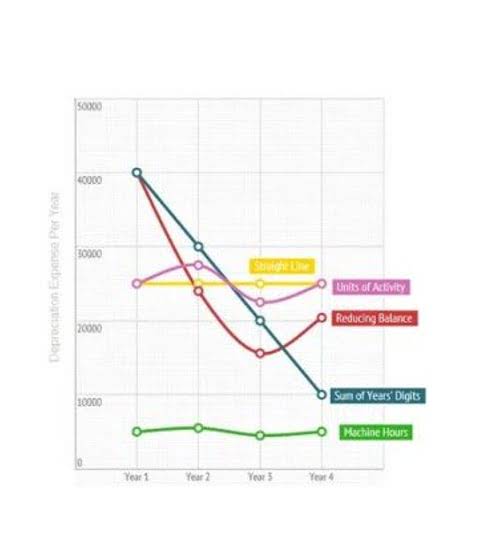
They help ensure your restaurant can meet customer demand while effectively managing costs. The cash flow statement encompasses various sources and uses of cash, such as sales, payments to suppliers and vendors, payments to employees, cash from loans or investments, and other cash transactions. Restaurant owners and managers can use it to assess profitability, identify patterns, and make informed financial decisions. Accounting in a restaurant ensures the creation of detailed financial reports. Consequently, it helps facilitate adherence to tax legislation and regulations and helps a restaurant identify tax liabilities, eligible deductions, and credits. You can either “short pay” the vendor (pay the adjusted amount) or pay the full amount and account for the credit later.
- Set up a streamlined system, such as QuickBooks, to track supplier invoices.
- ” There’s no doubt, many more important things you could be doing to make your restaurant business more profitable.
- Inform them about the tax implications of tips and how they are reported on their paychecks.
- One aspect of cash flow management is ensuring that your restaurant generates enough profit margins and looking for factors that may decrease the profit.
- You won’t know if the kitchen is bleeding cost, if labor is outpacing revenue, or if your delivery orders are actually profitable.
- Revenue is total sales, including food, merchandise, prepackaged goods, and any other products or services your restaurant offers.
The Basics of Bar & Restaurant Accounting
Practicing thorough restaurant accounting is crucial, but it can be overwhelming to think of managing your own books Statement of Comprehensive Income and records at first. To better understand restaurant bookkeeping, read these restaurant account tips and suggestions, and get on the way to being as successful as you imagined. Choose an accounting software to ease your data entry tasks, create customized invoices, create regular profit and loss statements, track your revenue, and review cash flow. The accrual accounting method records revenue and expenses when they are earned or incurred, regardless of when the actual cash transaction occurs. This means that revenue is recognized when a sale is made, even if the customer still needs to pay, and expenses are recognized when they are incurred, even if the bills are still to be paid. Revenue reportsLastly, revenue reports are very important for accounting for restaurants.
What to know about your restaurant profit margin
For more information about Expert Assisted, refer to the QuickBooks Terms of Service. At the end of the day, accounting is all about getting the information you need to make smart decisions. That means seeing a comprehensive picture of your entire restaurant, presented the way you want. Do you use a point of sale (POS) system in the front of the house or an app that tracks inventory?

Dazzle your customers instead of cleaning up the books
- Consider QuickBooks Live Experts, which pairs you with a dedicated team of certified bookkeepers who handle your books for you and provide expert support.
- Or, a server could take full payment from a customer, and then record the sale with a senior discount, and keep the difference.
- However, even in the early stages, money mismanagement can have serious consequences—including restaurant failure due to running out of money.
- In general, your restaurant’s chart of accounts will have at least seven categories.
- Provide employees with clear instructions on how to track and report cash tips.
- Take a quick dive into the essentials of restaurant accounting—from the different accounting methods to managing restaurant income and expenses.
It’s essential to track tip distribution and ensure proper tax reporting. A hybrid approach combines elements of both cash and accrual accounting. For example, small transactions can be recorded using cash, while larger transactions are tracked using accrual accounting. Professional services also provide scalability that internal systems often lack. Analyzing profit margins by menu item, by day of the week, and by season provides insights for pricing accounting for restaurants strategies and menu adjustments.
Bring in your own bottle of liquor and then pocket the proceeds from it, rather than selling from bottles owned by the restaurant. A tough one to spot, especially when the bottle you’re bringing in matches the one already being sold to customers by the restaurant. Of course, there’s always the reverse approach, where you just steal alcohol from the bar and take it home with you – either for personal consumption, or to sell it https://www.bookstime.com/ on to someone else.

That’s when OEO stepped in to provide back-office talent for vendor statement reconciliation and AP processing. By shifting to an accrual method, we helped them gain visibility into their payables and forecast better cash flow, enabling smoother operations during their growth. For example, one of our clients, a fast-growing regional restaurant group, relied on this method early on. They struggled to keep up with delayed vendor payments and overlooked unpaid invoices.
All restaurants, regardless of size or type, need to have a chart of accounts. The chart of accounts is a fundamental accounting tool, serving as a comprehensive listing of every account in a restaurant accounting system. And since labor costs are one of the largest expenses for a restaurant, it’s important to know what it is so you can invest money wisely and increase profits. But knowing the basics of restaurant accounting can pay dividends in helping you understand your accountant better and manage your money. QuickBooks can track all of your restaurant locations, including food trucks, in one system. You can track income and expenses for all of your profit centers—simply set up restaurants, catering, or food trucks as its own class.
The Dangerous Myth of the “Once-A-Year Accountant”
Sound financial management depends heavily on your choice of accounting software, which plays a leading role in maintaining your restaurant’s operations. Accounting software should align with your budget, offer user-friendly functionality and integrate seamlessly with existing programs and applications. To assist you in navigating the extensive array of choices, we performed a deep dive into the leading accounting software solutions for restaurants. We examined their features, prices, fees and reputations to come up with the five best options for restaurant owners. Invoices should also be reconciled to purchase and receiving orders prior to payment to help ensure you don’t lose track of short pays and vendor credits. This statement is an effective tool for keeping track of your revenue, food costs, labor costs, and operating expenses.

Any connections between you, your bank accounts, and Wave are protected by 256-bit SSL encryption. Add up all payments to employees, including hourly wages, salaries, overtime, and additional benefits. You’ll be able to better communicate with your accountant and get practical ways to run your restaurant more efficiently. And a small restaurant will probably have a low prime cost in comparison. The other fixed costs (occupancy expenses and operational expenses) aren’t as easy to cut back on, and they usually make up a smaller portion of your overall expenses anyway.
Revenue per Head (Average Ticket Size)
- But if it just seems too daunting for you to handle, consider the next step as the most important.
- Xero also offers insights into outstanding invoices, upcoming bills and a historical record of your bank account balance.
- Nish received his Bachelor of Commerce from Gujarat University, then moved to the UK to pursue his master’s degree at the London School of Accountancy & Management, graduating in 2006.
- Certification can also lead to career advancement, higher earning potential, and the personal satisfaction of merging your love for the culinary world with your accounting profession.
- Imagine being able to link your POS system and your restaurant accounting system so that you could track inventory and labor costs, methods of payment, and a whole host of other variables.
Incorporating data-driven insights into your decision-making process can lead to increased efficiency and higher profit margins. Establishing standardized financial procedures can bring consistency to your accounting operations. When everyone in your team follows the same processes, the risk of errors decreases, and efficiency improves. In the intro, I also mentioned that some restaurants want 13 financial statements per year instead of the usual 12, but our staff thinks this is a mistake.